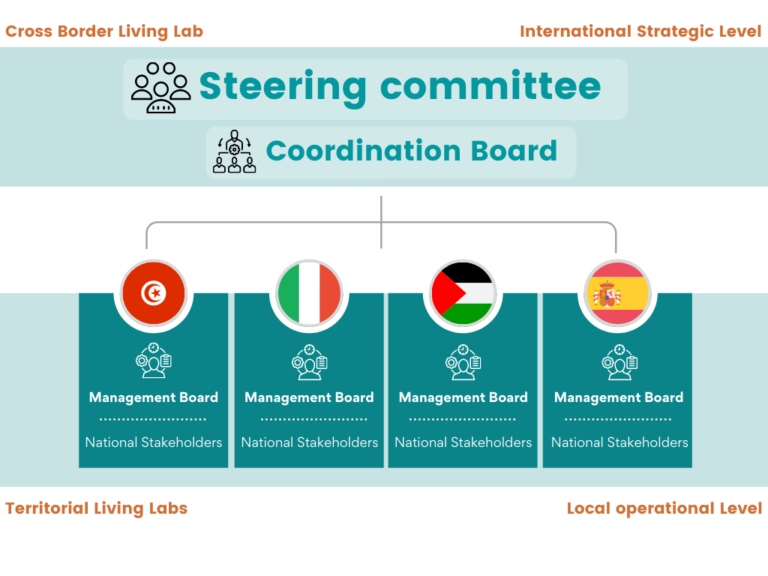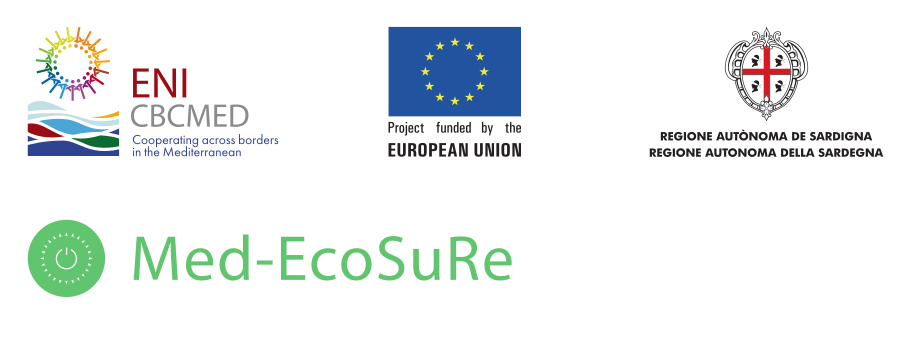STRUCTURE
MED beX.live is a cross-border Living Lab network based on the Living Lab approach.
Living Labs can be defined as “a multi-stakeholder organization set-up to carry out innovation projects that follow the principles of open and user innovation and focus on real-life experimentation”[1]. The principles of the LL approach are:
Multi-method approaches
User engagement
Multi-stakeholder participation
Real life setting
Co-creation
As managed collaboration network, it features internal transparency and direct communication, where members collaborate and share knowledge directly with each other, without hierarchies, coming together with a shared vision. The network activities are intended to facilitate and achieve the objective to exchange best practices and lessons learned, requiring to set common tools, methods or even infrastructure to exchange comparable information in order to perform research in a similar way within the various living labs. In this way, partners of various living labs can conduct research on a larger scale cross-borderly, creating a higher impact on innovation[2]
[1]Living Lab Methodology Handbook. Available from: https://u4iot.eu/pdf/U4IoT_LivingLabMethodology_Handbook.pdf
[2]Cross-Border Living Labs Networks to Support SMEs Accessing New Markets. Available from: https://www.researchgate.net/publication/230730344_Cross-Border_Living_Labs_Networks_to_Support_SMEs_Accessing_New_Markets

The Living Lab structure includes a strategic level and an operational Level. The strategic level, also called the Cross Border Living Lab, will gather partners of the project and stakeholders (external experts and companies) to collaborate and share knowledge directly with each other to propose and implement the most suitable innovative solutions in university Buildings. The operational level represents the physical living labs. In fact, the solutions proposed and validated within the Cross Border Living Lab will be implemented in University Buildings in three countries which are Tunisia, Italy and Palestine.

The governance structure is formed by three bodies:
– Cross-boarder Steering Committee (CSC)
– Cross-boarderCoordinationBoard (CCB)
– Local Management Boards (LMB)
Cross boarder Steering Committee
At the international and strategic level, the governance is structured in a Cross-Border Steering Committee, composed by researchers and external experts (1 memberexternal expert for each partners + 4 experts, two from northern Mediterranean countries and 2 from southern Mediterranean countries).
The CSC definesand approvesthe LL Action Plans, to set technical guidelines in order to manage:
– Pilots – Physical Place of local Living Lab: Services / Infrastructure /Tools / Technologies / Instrument / Monitoring tools and protocol
– Best practice & technologies: analysis/Training path /seminar &workshop/ best passive renovation solutions / technological solutions /innovative scenarios / measures
– Digital Twin of Living Lab (if developed): Digital model of the LL space to create virtual scenarios of solutions and performances, energy modelling, IOT data management and behaviour evaluation
Cross boarder Coordination Board
The cross-boarder coordination board is the executive body of the MCbLL in charge of providing coordination and assistance as necessary among the various parties in the implementation of the LL action Plans.
The coordination board is composed by researchers and experts belonging to the partner organisations (2 members from Mediterranean European countries + 2 members from Mediterranean Partner countries).
This coordinator board is led by a cross-boarder coordinator.
Local Management Boards

